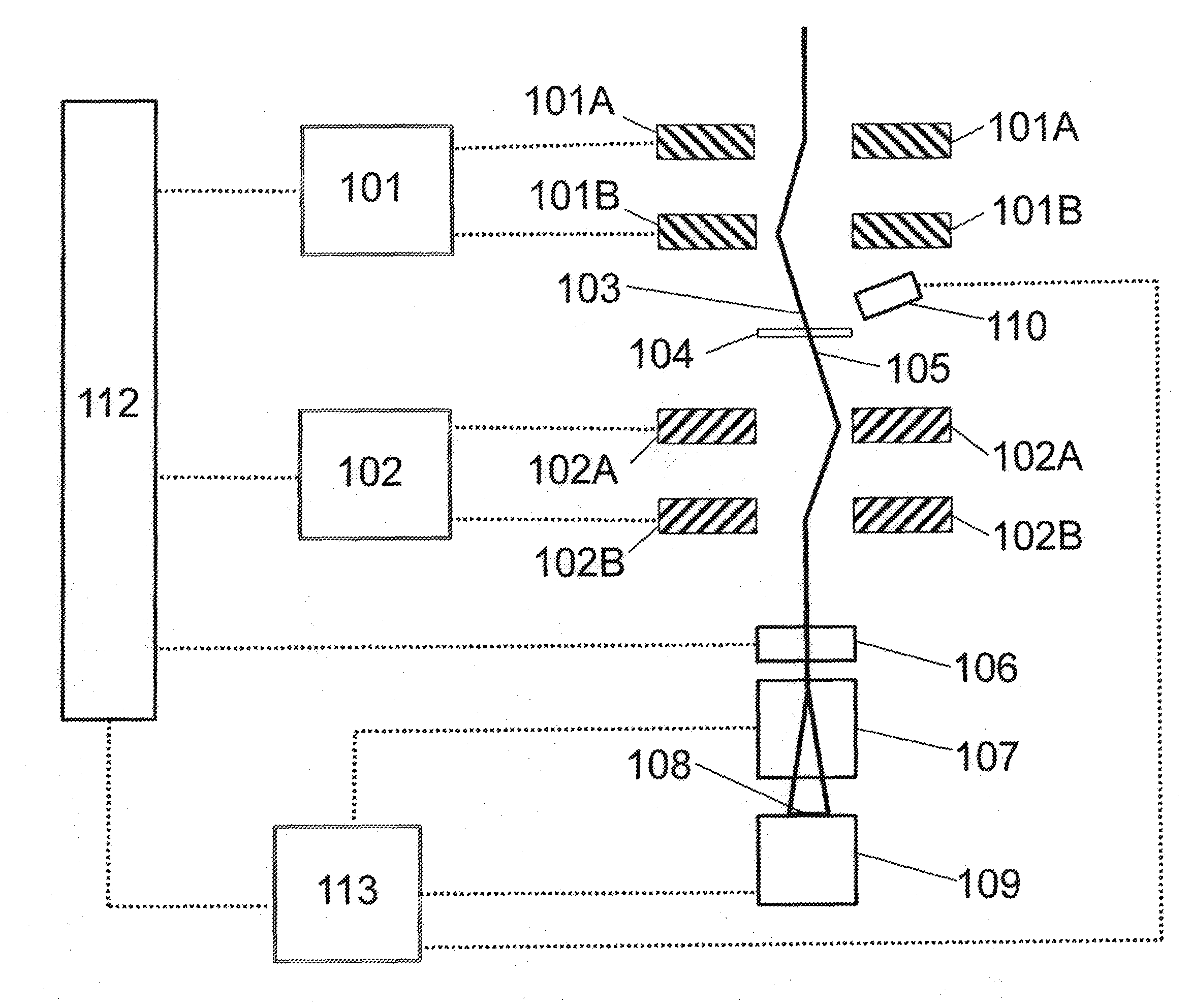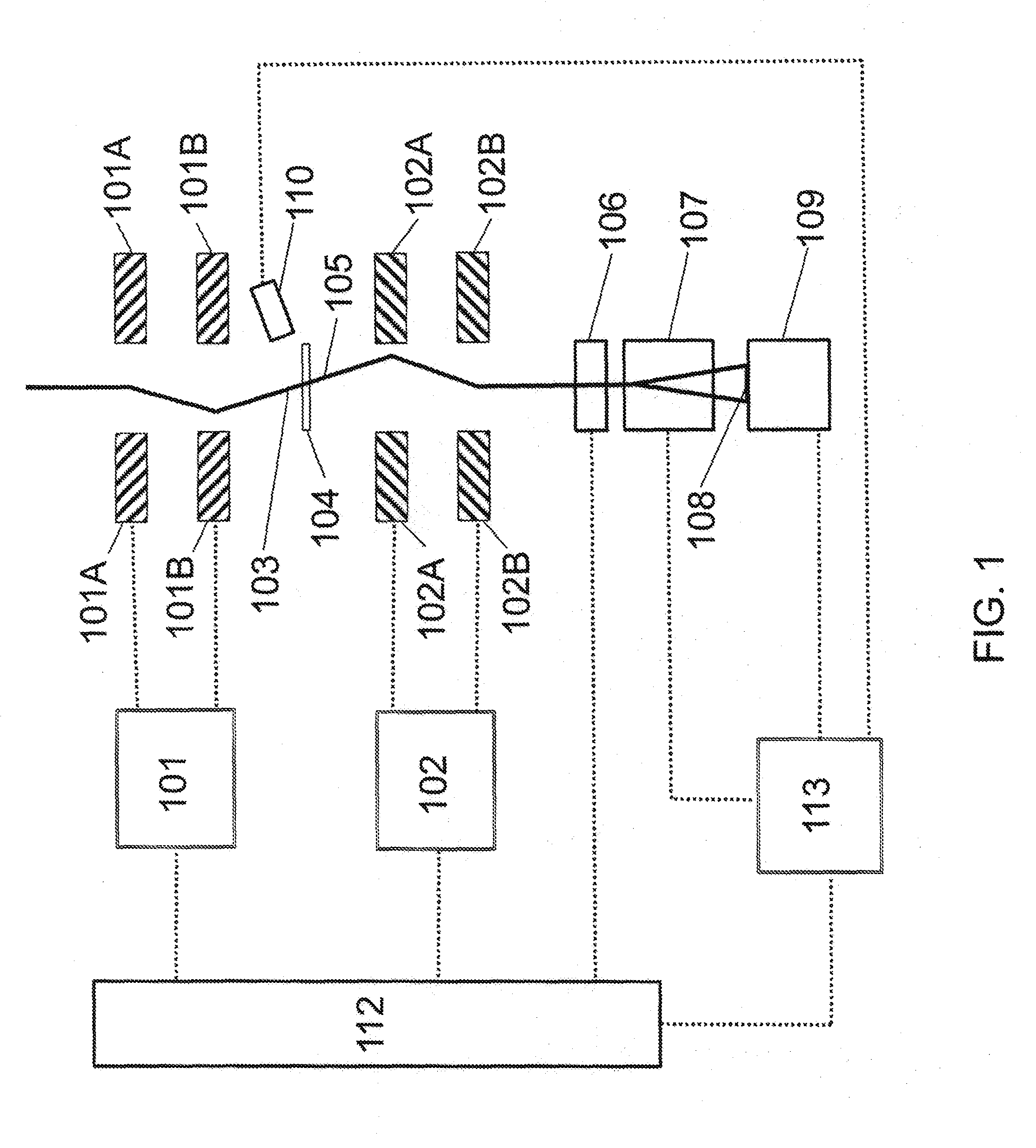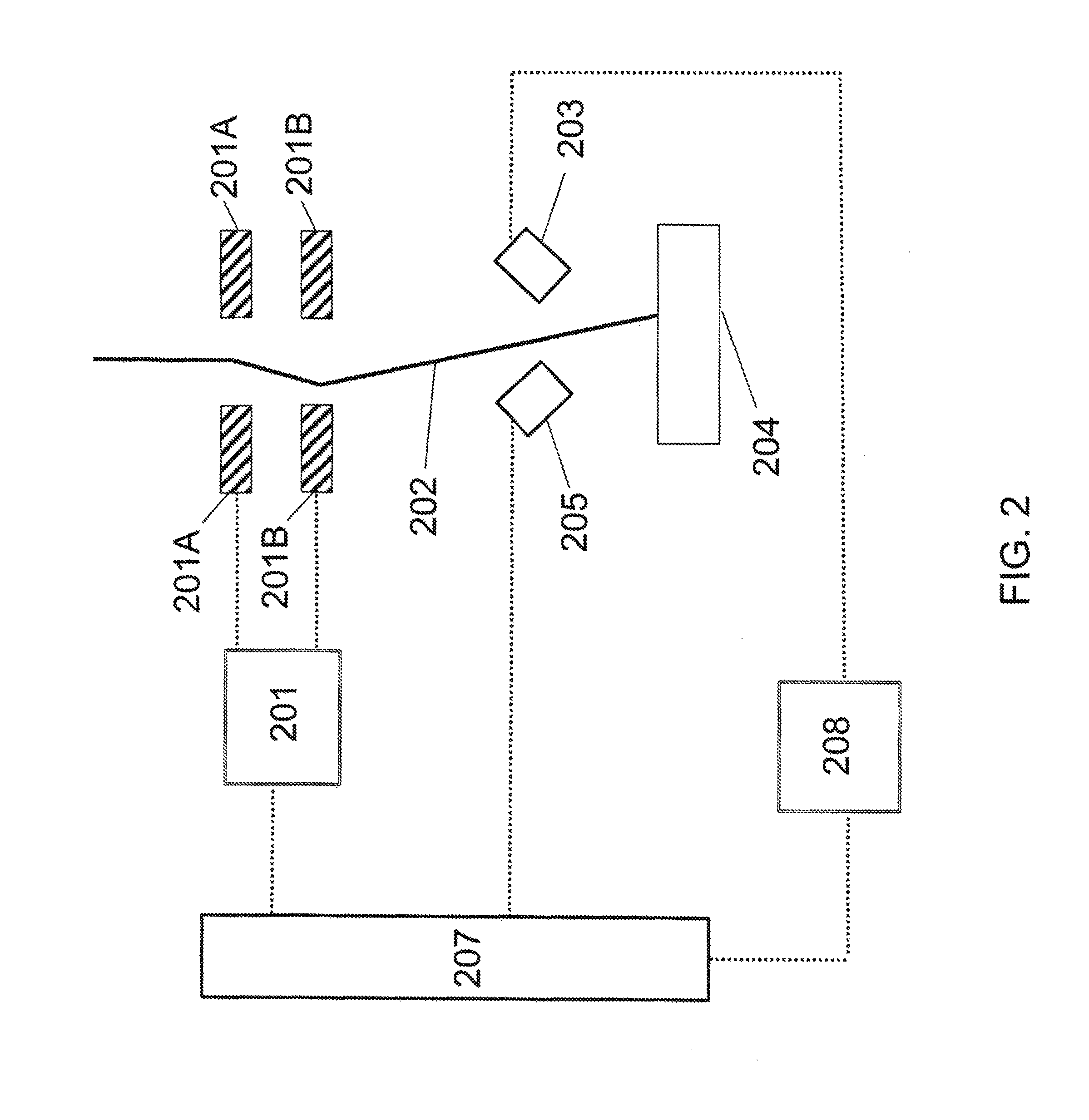Method and system for improving characteristic peak signals in analytical electron microscopy
a characteristic peak signal and electron microscopy technology, applied in material analysis using wave/particle radiation, photoelectric discharge tubes, instruments, etc., can solve the problems of increasing the increasing the stochastic noise and uncertainty of quantitative measurements, and being extremely difficult to quantify
- Summary
- Abstract
- Description
- Claims
- Application Information
AI Technical Summary
Benefits of technology
Problems solved by technology
Method used
Image
Examples
example 1
EELS
[0048]Proof of concept EELS experiments were conducted using a JEOL 2010 F TEM coupled to a Gatan Imaging Filter and a NanoMEGAS SpinningStar precession system (designed for and marketed for structural analysis of crystalline materials using PED). A 0.5 nm probe with a 9 mrad (approx. 0.5°) convergence and 10 mrad (approx. 0.6°) collection semi-angle was used in conjunction with precession angles between 0 and 1.92°. The precession frequency was set at 100 Hz and the microscope operating voltage at 200 keV.
[0049]A first proof of concept experiment was conducted using the Si L2,3 peak (edge) obtained from a single crystal Si sample oriented along the [011] zone axis. Spectra containing the Si L2,3 peak were acquired over 3 s periods at range of precession angles. FIG. 3A shows raw data, counts (C) expressed in arbitrary units (a.u.) plotted against energy loss (E.L.) expressed in eV, for the Si L2,3 spectral region acquired without precession and at a 0.48° precession angle. The ...
example 2
EDS
[0051]Proof of concept EDS experiments were conducted using a JEOL 2100 LaB6 TEM coupled to: a) an Oxford Inca EDS detector model 6498 with a take-off angle of 22 degrees, a detector area of 30 mm2 and an energy resolution of 136 eV at 5.9 KeV; and b) a NanoMEGAS DigiStar precession system model P1000. A 25 nm probe with a 2 mrad (0.12 degrees) convergence angle was used in conjunction with precession angles between 0 and 3 degrees. The precession frequency was set at 100 Hz and the microscope operating voltage was 200 keV.
[0052]A sample of single crystal silicon was aligned precisely along the [110] zone axis and the SiKα peak measured with precession inclination angles of 0, 1, 2 and 3 degrees. A maximum increase in signal strength of approximately 8% in the strength of the Si peak was observed.
[0053]FIG. 5 displays an overlay of the different SiKα peak signals acquired at different precession angles after background normalization. Data labeled 0 was acquired without precession...
PUM
| Property | Measurement | Unit |
|---|---|---|
| energy losses | aaaaa | aaaaa |
| incident angle | aaaaa | aaaaa |
| angle | aaaaa | aaaaa |
Abstract
Description
Claims
Application Information
 Login to View More
Login to View More - R&D
- Intellectual Property
- Life Sciences
- Materials
- Tech Scout
- Unparalleled Data Quality
- Higher Quality Content
- 60% Fewer Hallucinations
Browse by: Latest US Patents, China's latest patents, Technical Efficacy Thesaurus, Application Domain, Technology Topic, Popular Technical Reports.
© 2025 PatSnap. All rights reserved.Legal|Privacy policy|Modern Slavery Act Transparency Statement|Sitemap|About US| Contact US: help@patsnap.com



